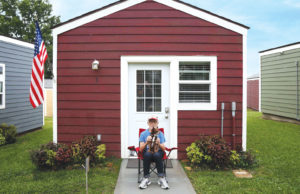— After increasing for three straight months, existing-home sales took
a steeper-than-expected dive in December, as spooked first-time
homebuyers put the brakes on purchases, fearing that a generous
government tax credit would expire at the end of November.
Total sales of single-family homes, townhomes,
condominiums and co-ops fell 16.7 percent, from a seasonally adjusted
rate of 6.5 million units in November to 5.4 million in December, the
“December’s plunge in existing-home sales is payback for the
Despite the year-end slowdown — the greatest monthly
decline in 40 years — December sales were 15 percent higher than the
4.74 million units that were sold in
For the year, existing home sales in 2009 rose 4.9 percent over 2008, marking the first annual sales gain since 2005.
Demand for existing homes fell in December as the
tax credit’s original deadline passed, but the Worker, Homeownership
and Business Assistance Act of 2009 extended the tax credit to sales
through
“We’ll likely have another surge in the spring as homebuyers take advantage of the extended and expanded tax credit,” said
the chief economist at the Realtors association. “By early summer, the
overall market should benefit from more balanced inventory, and sales
are on track to rise again in 2010,” unless the sluggish jobs market
cools the housing recovery.
Newport wasn’t so optimistic. He said it was unclear
whether the credit for current homeowners would jump-start sales as the
one for new homebuyers did. So far, the effect has been minimal, he
said. Mortgage applications are near their lowest level since 1997,
even though mortgage interest rates are historically low and are likely
to increase throughout the year.
Newport said the main impact of the second tax
credit would be to push sales from the second half of 2010 into the
first half. Overall, he expects existing-home sales to be weaker this
year.
“Our forecast has sales dropping in the first
quarter of 2010,” he said. “Sales will take a second hit in the third
quarter of 2010, (as) payback from the second tax credit.”
“2010 is going to be a pretty uninspiring year for housing,” with higher mortgage rates and not much of a rise in sales, said
The median price for all types of existing homes was
However, for all of 2009, the median price for a single-family home was
Looming large over the nation’s housing market is
the expected March expiration of a Federal Reserve program that stepped
in to purchase more than
securities when a lack of buyers in the private market had frozen the
banking industry’s ability to lend and jeopardized the nation’s
economy. The massive federal effort helped push mortgage rates down and
revive the ailing housing industry by spurring sales and refinancings.
Analysts question whether the housing market is
ready to sustain itself without the government largesse. Ryding said
the planned pullout in March could cause interest rates on 30-year
mortgages to increase by a half-point. “I think that’s a real risk, and
that would put something of a damper on the housing recovery,” he said.
Insight, said there should be no impact, however, because financial
markets had been anticipating the program’s demise and already had
adjusted prices for it.
“There shouldn’t be any impact,” he said. “That
doesn’t mean rates won’t move around. They will bounce around, but our
expectation is that we don’t see any net upward pressure on mortgage
rates.”
The Federal Reserve, which is expected to announce its plans for the program this week, could extend the support if necessary.
Bethune said March might be too soon to pull the
plug because banks were still absorbing losses and rebuilding their
capital and earnings and might not be strong enough to provide the
necessary credit to keep the housing industry afloat.
“It’s a calculated risk the Fed is taking, that
things will be strong enough out there by the end of March to support
normal functioning of the credit markets. But I would say it’s a little
too optimistic.”
—
(c) 2010, McClatchy-Tribune Information Services.
Visit the














